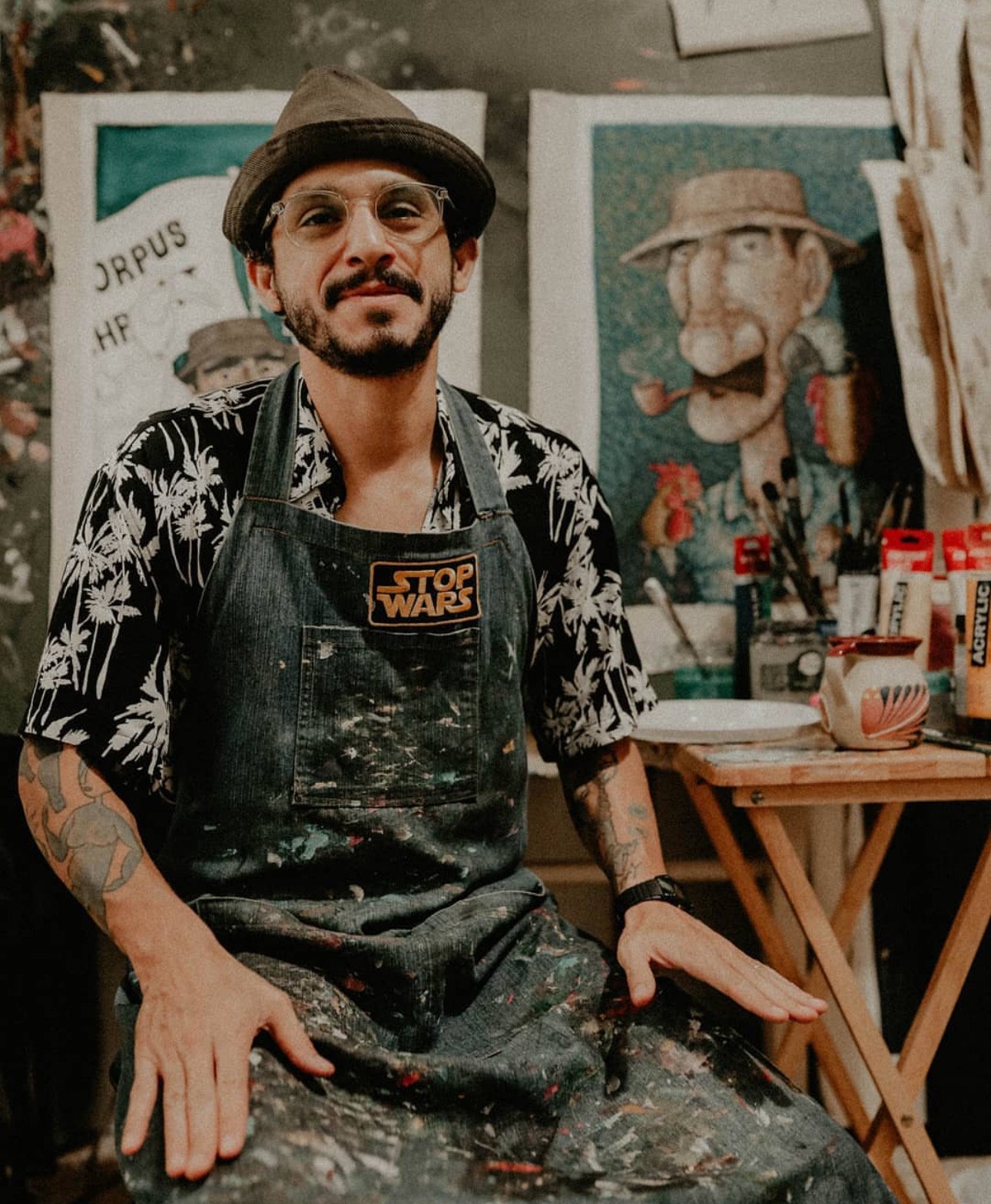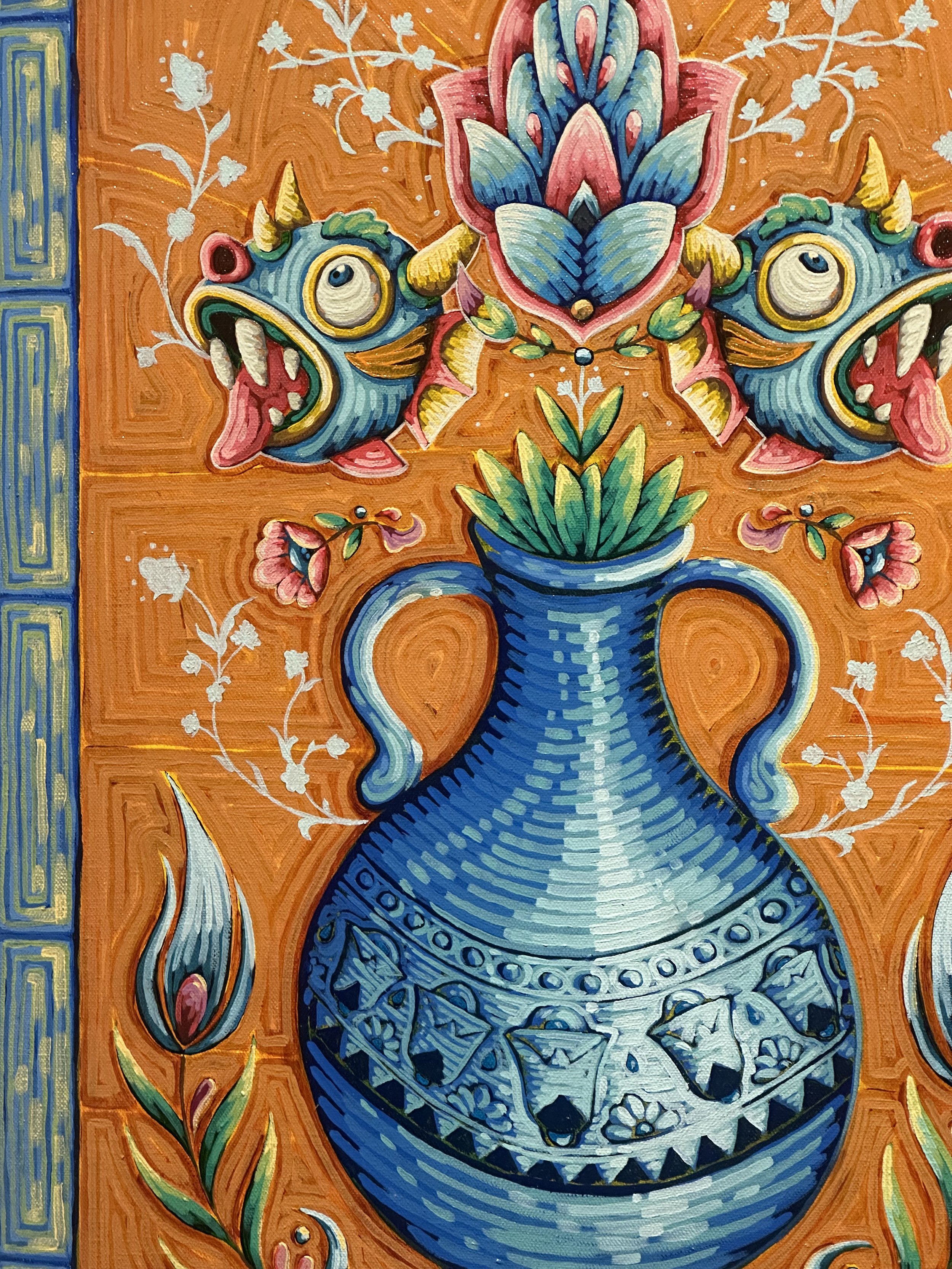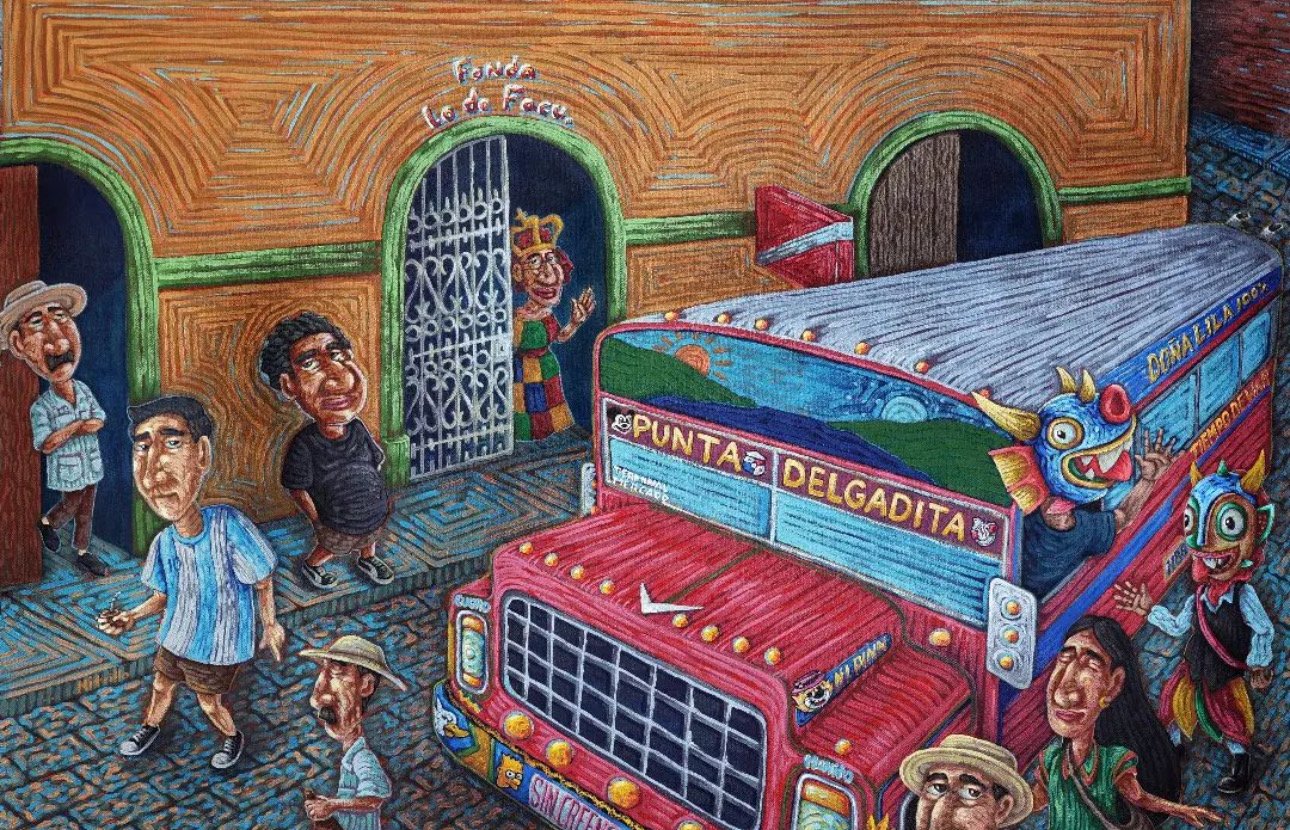Celeste Melgar in Conversation with Mitrillo: El Niño Diablo
Innocence of child the spirit of a Culture
“I miss everything that makes up Panama. I don’t have a preference. I love my country.”
Mitrillo, Juan Carlos Mitre is a Panamanian Artist that has blended a form of illustration and impressionism to create narratives of a daily life, lived full of color, wonder, creativity, and innocence. Bringing into awareness the importance of keeping the light, wanderlust, and constant state of awe that kids live in and not let it fade as years go by. In 2012 he traveled to Buenos Aires, Argentina to takeIllustration courses at la Escuela Argentina de Historieta and five years later he traveled to Mexico to develop his printmaking techniques in different courses. The artist Mitrillo grew up in Azuero which is where the Diablico dances originated and mainly take place in Panamá.
Mitrillo works on multiple mediums such as acrylic paint and linoleum blocks with ink. He was an apprentice of the Peruvian painter Cesar Castilla Lino, who is one of the main representatives in the Escuela de Azuero and took a lot of inspiration from his vibrant color palette.
Artist in Studio. Photo Courtesy: Mitrillo
Relevance of the Diablico in Panamanian Culture
In Panama there are in the Azuero Peninsula and across Panama, villagers celebrate Danza de Los Diablicos Sucios. The Diablicos Sucios, or "dirty little devils," wear red and black striped costumes with large, feathered masks. They dance to guitar music, carrying castanets, a dried cow bladder, and a whip. Other popular dances include the Diablicos Limpios, with flowers and handkerchiefs, and the Diablicos Espejos, with mirrors. All dances are full of vibrant colors, rich history, cultural heritage, talented creatives, living and breathing Panamá.
Celeste Melgar: Can you tell us about your background and journey as an artist? What initially inspired you to pursue art as a career?
Juan Carlos Mitre: My curiosity about art began at a very young age through my parents. My father, seeing that the task of reading was difficult for me and with the intention of stimulating this interest in me, gave me some comics, completely capturing my attention. The desire to know what those characters were saying not only motivated me to read, but it also awakened that love for drawing. And my mother, on the other hand, introduced me to Mexican muralists. That's how I grew up trying to replicate and unify those two worlds.
When I was twenty years old I met my painting teacher Cesar Castilla Lino, he was the one who really invited me to take up art as a profession. This is how in 2012 he traveled to Buenos Aires where he studied comics at the Argentine School of Comics, to later mix the playful figures of the comic with mixed techniques of painting.
CM: How would you describe your artistic style or approach? Are there particular themes, subjects or techniques that you frequently explore in your work?
JCM: I don't know how to define my style, what I can say is that I try to paint joy and hope, perhaps this is the main theme of my work. Making something like a Diablo mask that could be related to something dark or gray can be seen from another perspective, even capable of causing a smile. The world already gives me doubts and fears, and I think we don't need more of that.
El Niño Diablo Exhibition. Photo Courtesy: Celeste Melgar
CM: What influences or sources of inspiration shape your artistic practice? Are there specific artists, movements or experiences that have had a significant impact on your work?
JCM: My strongest influences in terms of currents are impressionism, Mexican muralism, Franco-Belgian comics and Argentina. With comics and graphic novels it happens that simplicity and the ability to synthesize prevail and that is very attractive to me. Then there are also the circus arts of Slava Polunin and Islamic Art that really catch my attention.
To say an artist would be to talk about Alejandro Jodorowsky, Moebius, Herge, Hayao Miyazaki, Guy Delisle, Van Gogh, Joe Sacco, Isaac Brodskii and the entire Mexican muralist school.
CM: Can you explain your creative process to us? How do you usually generate ideas and translate them into finished works of art?
JCM:I like to talk and listen to strangers all the time, I believe that everyone has a story to tell and all you have to do is take a little time to listen. Listening is a quality that we have little by little been losing and how much wonder can be discovered by paying sincere attention to the words and feelings of another person. Some stories are fascinating and others not so much, the truth is that I borrow some things from those stories and try to imagine them as mine.
I am usually not one of those who sees the finished work from its conception, rather I start from an idea and it develops while I paint.
Photo Courtesy: Mitrillo
CM: What role does experimentation and risk-taking play in your artistic development? Do you actively seek out new materials, methods or concepts to incorporate into your work?
JCM:Being an artist is already a risk in itself, considering that painting is bringing an image to life through stains. I don't consider myself very risky with materials, but I do like to explore some surfaces that provide some context. For example, in engraving, making the negative on different surfaces gives depth to the work. Although, I can confess that I feel much more comfortable working with watercolors and pens, since I feel it is closer to comics.
CM: How do you achieve the balance between artistic expression and public reception? Are you aware of how your work might be interpreted or received by viewers?
JCM: I can't do it hahaha, I'm somewhat shy and lonely, even though the public's reception for me is 30% of the work (The other 70% is divided between the conceptualization and the resource to execute it). But I am fully aware of the impact that the work can have, and to a large extent, the reality is that making art is a political act. However, the interpretation that the viewer will have is out of our hands as artists.
I conclude the idea by saying that, if a work does not cause “Something” in the viewer, the work itself is nothing more than a decorative object.
CM: Can you talk about any recurring motifs, symbols or narratives that appear in your artwork?
JCM:The character of the Devil Boy is the main actor and I try to narrate his life. The little devil is an invitation to play, to innocence, to connect with the biological child that we were at some point, but also to connect with the emotional child that continues to live there within our being. This is the most important narrative and symbology of my work so far.
Generally we are told that we must remove our masks. I advocate for that being with few social programmings who is perceived as a Little Devil and who is symbolically found in the innocence of children, who, in their purity, always tell the truth, even if it is irreverent.
CM: How important are they to you personally, and what do you hope viewers take away from encountering them?
JCM: Societies are already chaotic, violent and overflowing, so if I can calm down that social noise a little, I am satisfied.
CM: How do you see the relationship between art and society? Do you believe art has the power to bring about social change or influence public discourse?
JCM: Of course! Art -It is a political act-. It is a staging of intentions, you can be critical, informative, suggestive, epic or encouraging. Likewise, it is also a political act to make the public believe that art is not a political issue.
A photograph put an end to the Vietnam War, constructivism gave character to Soviet society, cinema shaped society in the United States, music stimulated the Third Reich, goldsmithing gave a voice to the Mesoamerican peoples, art is politics That is why I propose peace in a world that speaks otherwise.
CM: What challenges or obstacles have you encountered in your artistic career and how have you overcome them? Are there any lessons or insights you've gained along the way that you'd like to share?
JCM: The main obstacle for me as an artist was realizing that as a painter I also have to learn to be a businessman.
Every artist must learn about finances and sales.
Artist in Studio. Photo Courtesy: Mitrillo
CM: Looking ahead, what are your aspirations or goals as an artist? Are there any upcoming projects, collaborations or exhibitions that you are particularly excited about?
JCM: Looking to the future, I am already working on the new body of works that will surely lead to an upcoming exhibition. But also a project that has me very excited is a Panamanian-produced animated film of which I will be a part.
I also want to publish a graphic novel that I've had in the pipeline for a while.
CM: Tell us what you think of the art scene in Panama? How does Panamanian culture influence you? What message do you feel that Panama has to transmit to the world?
JCM: The art scene in Panama gives me the impression that it is finding or rediscovering its voice and that is great because once you have the voice you can say what you have inside.
In that same sense, we are a deeply peaceful and friendly country and that is also reflected in how art is manifested in Panama.
I finish by saying that art in Panama is like national football, we have had great successes, great players, we are in a moment in which each player is in his position doing his job in the best possible way, some players stand out in international leagues, others in regionals and others in the national, but we are a growing team.
Thank you to Juan Carlos Mitre on behalf of MADE IN BED.
To find out more, connect via Instagram
Celeste Melgar
Features Co-Editor, MADE IN BED






